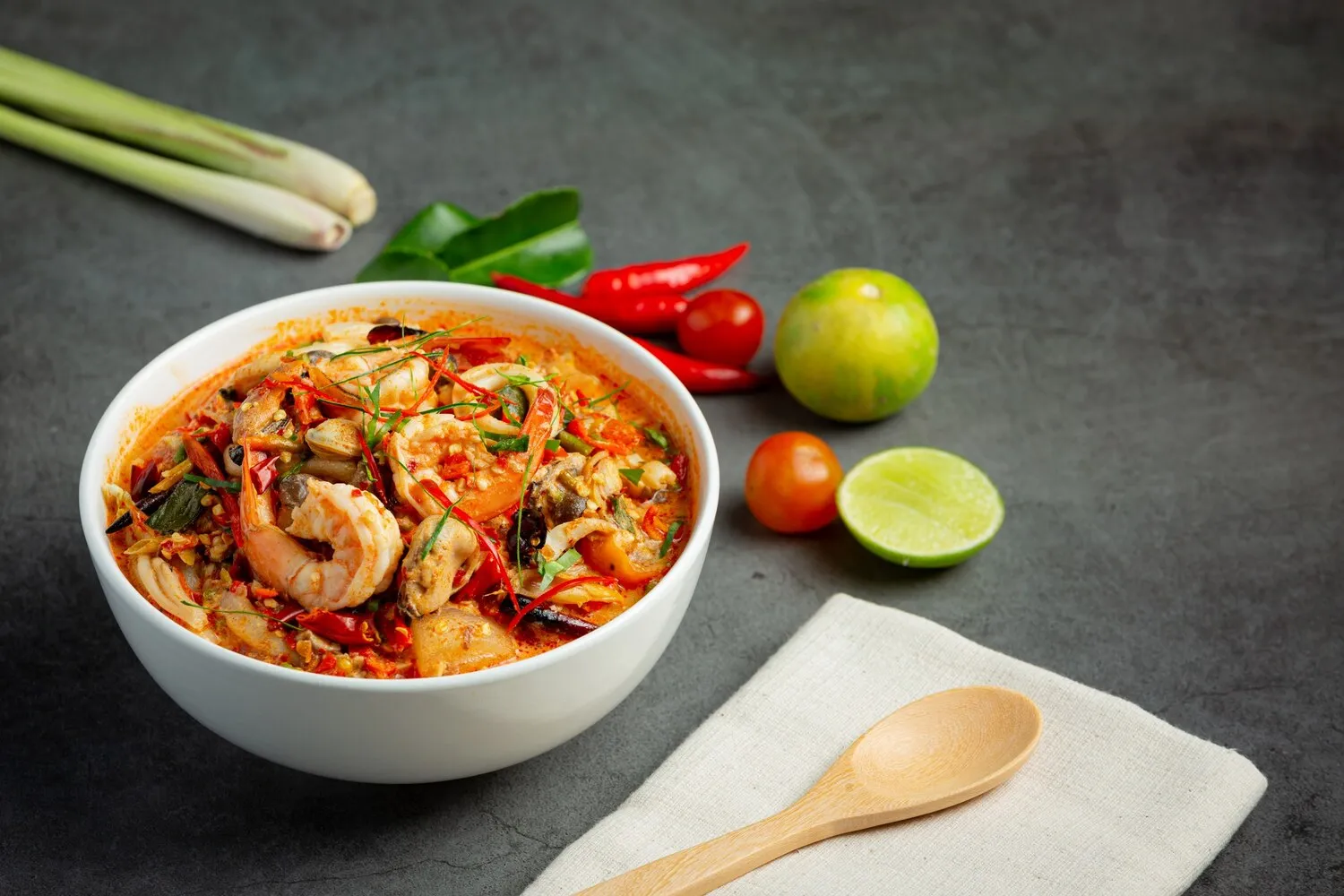
Mohinga
Burmese national dish, a fish-based soup with rice noodles.
Nutrition Facts
* The % Daily Value (DV) tells you how much a nutrient in a serving of food contributes to a daily diet. 2,000 calories a day is used for general nutrition advice.
The exact origins of Mohinga are debated, but it's believed to have originated in the Irrawaddy Delta region. Some theories suggest it evolved from a simpler fish stew, gradually incorporating more complex ingredients and techniques over centuries. The dish reflects the agricultural richness and riverine resources of the region, and culinary influences include various ethnic groups within Burma.
Mohinga is more than just a dish; it's deeply ingrained in Burmese culture. It is a ubiquitous breakfast food, readily available from street vendors and tea shops across the country. It's also served at social gatherings, religious ceremonies, and family meals, solidifying its position as a culinary symbol of national identity.
Breakfast Staple
Mohinga is predominantly consumed as a breakfast dish. Street vendors often start selling it early in the morning, and it's a quick and affordable way for many Burmese to begin their day.
Community Food
It is frequently served at communal events, such as pagoda festivals and almsgiving ceremonies. Preparing Mohinga for these occasions is a shared activity that fosters community bonding.
Regional Variations
While considered a national dish, regional variations exist. The Mohinga in lower Burma tends to be thinner and more sour, while in upper Burma it's often thicker and richer.
Symbol of National Identity
Mohinga is considered a unifying food, representing Burmese culinary heritage. It transcends ethnic and socio-economic boundaries and is enjoyed by people from all walks of life.
Mohinga is characterized by a savory, slightly tangy, and umami-rich flavor profile. The dominant taste is derived from fish broth, balanced by the addition of aromatic spices and herbs. The textures vary from the smooth broth to the chewy rice noodles and crunchy garnishes.
The key flavor components include: Fish (often catfish or other freshwater fish) which provides the base savoriness; lemongrass, ginger, garlic, and onions contribute aromatic depth; roasted rice powder thickens the broth and adds a nutty flavor; fermented fish paste (ngapi) provides a concentrated umami kick, tamarind paste adds a tangy note; and turmeric gives the broth its characteristic yellow color. Cilantro, fried onions, chili flakes, and lime are common garnishes, offering fresh, pungent, spicy, and acidic highlights.
Fish Broth Preparation
The quality of the fish broth is paramount. Simmering the fish with aromatics for a long period extracts the maximum flavor. Strain the broth thoroughly to remove any bones or impurities.
Rice Powder Thickening
Roasted rice powder is used to thicken the broth and add a nutty flavor. Toasting the rice until golden brown before grinding enhances its aroma and flavor. Be careful not to burn the rice.
Ngapi Usage
Ngapi, fermented fish paste, adds a distinct umami flavor, but it's potent. Start with a small amount and adjust to your taste preference. Some versions use shrimp paste instead.
Noodle Selection
Use thin rice vermicelli noodles for authentic Mohinga. Cook the noodles until tender but not mushy. Rinse them with cold water to prevent sticking.
Garnishes are Key
Don't skimp on the garnishes. Fresh cilantro, crispy fried onions, and a squeeze of lime juice add essential layers of flavor and texture to the dish.
Explore additional Soup dishes and restaurants
Explore SoupDiscover top dining spots and culinary experiences in Aurora.
Explore AuroraLearn more about the food culture, restaurant scene, and culinary heritage of United States.
Explore United States